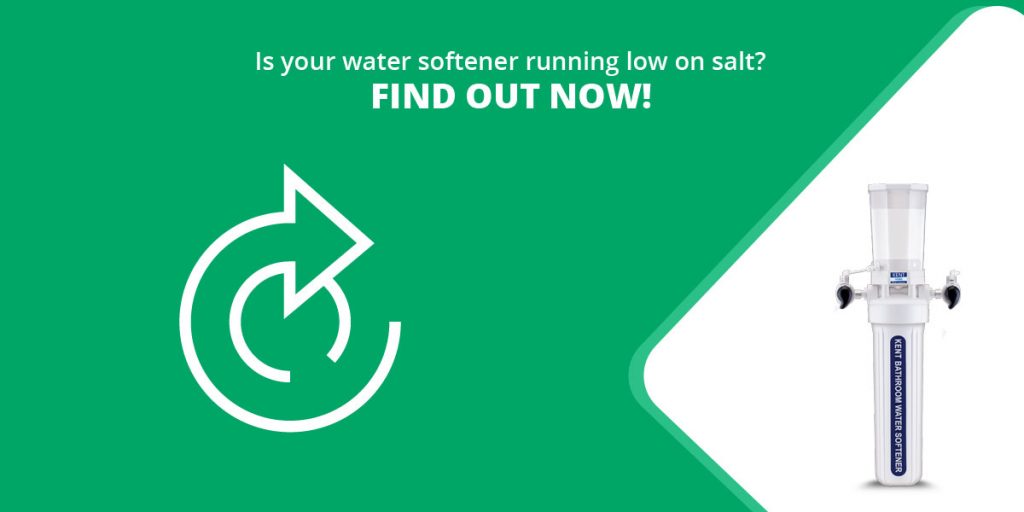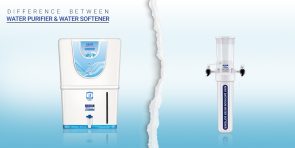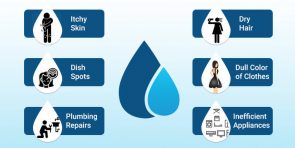How to Find Out if Your Water Softener is Running Low on Salt?
The need for a water softener arises from our everyday struggles with hard water problems. If we opt for a good quality water softener that uses ion-exchange process, then other than adding salt to it periodically, the overall maintenance is quite low. But how do you get to know when the salt is to be added? We have collated a few important questions, which help you decide when to add salt, how to check the salt level and what happens if you forget to top up.
What is water softener salt?
Water softener salt is a vital and consumable part of a water softening system that is used to treat hard water, as the name suggests. Hard water contains significant amounts of minerals such as calcium and magnesium, which can have adverse effects on household appliances, plumbing fixtures, and pipes.
Water conditioner salt is utilized in a water purifier to initiate an ion exchange process that eliminates the “hardness” from water. This process involves swapping the minerals present in the unfiltered water with sodium ions from the salt, resulting in the removal of hard minerals and the softening of water.
Top factors impacting salt usage in your water softener
The easiest way to replenish your water softener’s salt supply is to keep a track of the schedule when you last refilled it. But the schedule also depends on a few important factors like
-
Hardness level of water in your home:
The amount of hardness in the water that is supplied to your home influences how often your water softener must regenerate. The area where water is harder will cause the resin to exhaust faster and thus needs to be cleaned often, this means that more brine solution and salt needs to be added.
-
Water usage in your home:
If during a month, the usage of water in your house if more than usual, you may have to add salt to the softener sooner than usual.
-
Type and age of water softener:
The type of water softener you use, its size and its age also define faster or slower need for refilling of salt.
-
Hardness level of water in your home
The amount of hardness in the water that is supplied to your home influences how often your water softener must regenerate. The area where water is harder will cause the resin to exhaust faster and thus needs to be cleaned often, this means that more brine solution and salt needs to be added.
-
Water usage in your home:
If during a month, the usage of water in your house is more than usual, you may have to add salt to the softener sooner than usual.
-
Type and age of water softener:
The type of water softener you use, its size and its age also define faster or slower need for refilling of salt.
How do I know If my Water Softener Is Running Low On Salt?
For those who do not have a regular schedule for refilling the salt, there is an obvious factor that indicates the softener is running low on salt – the difference in water quality. Once you start using a water softener the water quality in your home evidently improves. And it becomes very easy to notice the change in quality. You will start noticing the common hard water issues like soap scum, dishes taking longer than usual to get cleaned, soap not lathering well during shower, dull clothes, rough hair, dry skin, etc. If you begin to notice these problems, it is time to refill the salt in your water softener.
Checking the salt level in the water softener
To check the salt level in your water softener, first, locate the brine chamber. Brine chamber is where a highly concentrated solution of salt or potassium is stored. In some water softeners like KENT Bathroom Water Softener, the brine chamber is transparent and can be easily located. Open the lid on top of the chamber and check. If you see water at the bottom of the tank, it is time to add salt to it. Ensure that you manually scratch any salt that might be sticking to the walls of the brine chamber to avoid build-up.
Is it bad to let your water softener run out of salt?
Yes, it can cause damage to your faucets and fixtures while causing brine tank to overflow if you are not careful.
What happens if you keep using the water softener without salt?
If you forget to add salt to the water softener when it is due, the softening process will get affected and you will get hard water in your home. Also, not adding salt for long will saturate the water softening resin with hard minerals.
How much salt should be added to a water softener?
It is always recommended to keep your brine chamber at least one-quarter full of salt. At all times, the salt level should be above the water.
An automatic water softener can take care of automatic regeneration and brine refill without any manual intervention. Check out KENT Autosoft, which has these features and uses many other functions through the microprocessor-controlled method to make hard water soft.
Also Read: Top 10 Questions About Water Softeners





